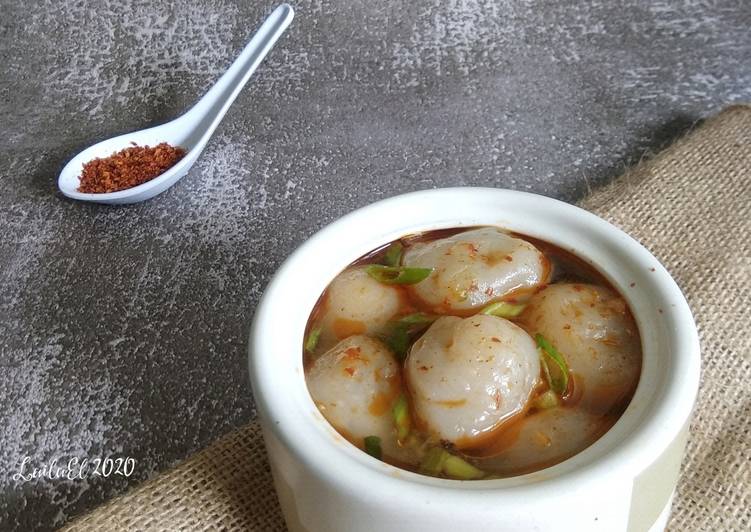
Hey everyone, it’s Brad, welcome to my recipe site. Today, I’m gonna show you how to prepare a special dish, spicy korean fish stew. It is one of my favorites. For mine, I’m gonna make it a little bit unique. This is gonna smell and look delicious.
Black sea bass, cooking wine, daepa, doenjang, edible chrysanthemum, fish sauce, garlic, gochujang, green chili pepper, green onion, ground black pepper, hot pepper flakes, hot pepper paste, korean radish, large green onion, mirim, red chili pepper, soy sauce, soybean paste, water. The classic Korean fish stew is traditionally known as maeun-tang, which means "spicy" and "soup" or "stew" in the Korean language. In certain seafood restaurants in Korea and in some Korean restaurants abroad, you can choose your fish while it's still swimming.
Spicy Korean fish stew is one of the most favored of recent trending foods in the world. It’s simple, it’s fast, it tastes yummy. It is appreciated by millions every day. Spicy Korean fish stew is something that I have loved my whole life. They are nice and they look fantastic.
To get started with this particular recipe, we have to prepare a few components. You can have spicy korean fish stew using 15 ingredients and 3 steps. Here is how you can achieve it.
The ingredients needed to make Spicy Korean fish stew:
- Get 1 lb whole fish(e.g. progie, bass, snapper, Flounder and etc)
- Prepare 2 cup mung sprouts
- Prepare 1/2 pack firm tofu
- Make ready 1 bundle mung glass noodle
- Prepare 1 medium onion
- Make ready 1 cup leek
- Take 2 green onions
- Take 2 Tsp korean hot pepper flakes
- Make ready 2 Tsp soy sauce
- Get 2 Tsp honey or brown rice syrup or sugar
- Make ready 1 Tsp gochujang
- Get 1 Tsp garlic paste
- Take 1 tsp ginger paste
- Take 1 Tsp white toasted sesame seeds
- Take 1 Tsp rice flour + 1/4 cup water to make starchy water
Use your fingers and/or a small paring knife to extract any flesh from fish head and the collar. If you are also using a fish rack, you can extract a significant amount of flesh from it by holding one end and strumming your fingers along the bones. If you love seafood and spicy soup, Im sure you will absolutely love this stew, called maeuntang in Korean and spicy fish stew (or soup) in English. Lori: Keeping dried anchovies in her purse.
Steps to make Spicy Korean fish stew:
- Flaky fish such as flounder, porgie, bass, red snapper (yellow tails) or mullet are great good choice for this recipe. Fresh mackerel is also very good but salmon or tuna are not good here. Boil the cleaned fish covered by water for 5 minutes.
- While the fish is boiling, make the paste by mixing hot pepper flakes with soy sauce, garlic ginger paste, gochujang, honey and starchy water. Set aside.
- Discard half of the cooking water (fish stock can be used for other dishes). Add the bean sprouts, cubed firm tofu, sliced onion and mung bean glass noodle. Stir in half amount of the sauce. Bring it to a boil and reduce to simmer and cook for 10~ 15 minutes. Make sure the simmering the liquid is not too much or too little (soak up by the glass noodle). Adjust seasoning with the remainder paste. Top with green onion and toasted sesame seeds. Serve with bread or rice.
Koreans have an expression, "shiwonhada" (시원하다)—literally, "intensely refreshing and cooling"—that describes Add spiciness to that party and you'll take shiwonhada to the next level. To me, the dish that perfectly captures this experience is the spicy fish stew called maeuntang (매운탕). Korean maeuntang usually is made with anchovy stock, chrysanthemum greens and a whole fish that's been cut into pieces. And it's typically brought to the table simmering in a wide, shallow pot. Maeun Tang is another Korean dish widely enjoyed by many Koreans.
So that is going to wrap this up for this exceptional food spicy korean fish stew recipe. Thanks so much for your time. I’m sure that you can make this at home. There’s gonna be interesting food in home recipes coming up. Remember to save this page in your browser, and share it to your loved ones, friends and colleague. Thank you for reading. Go on get cooking!

